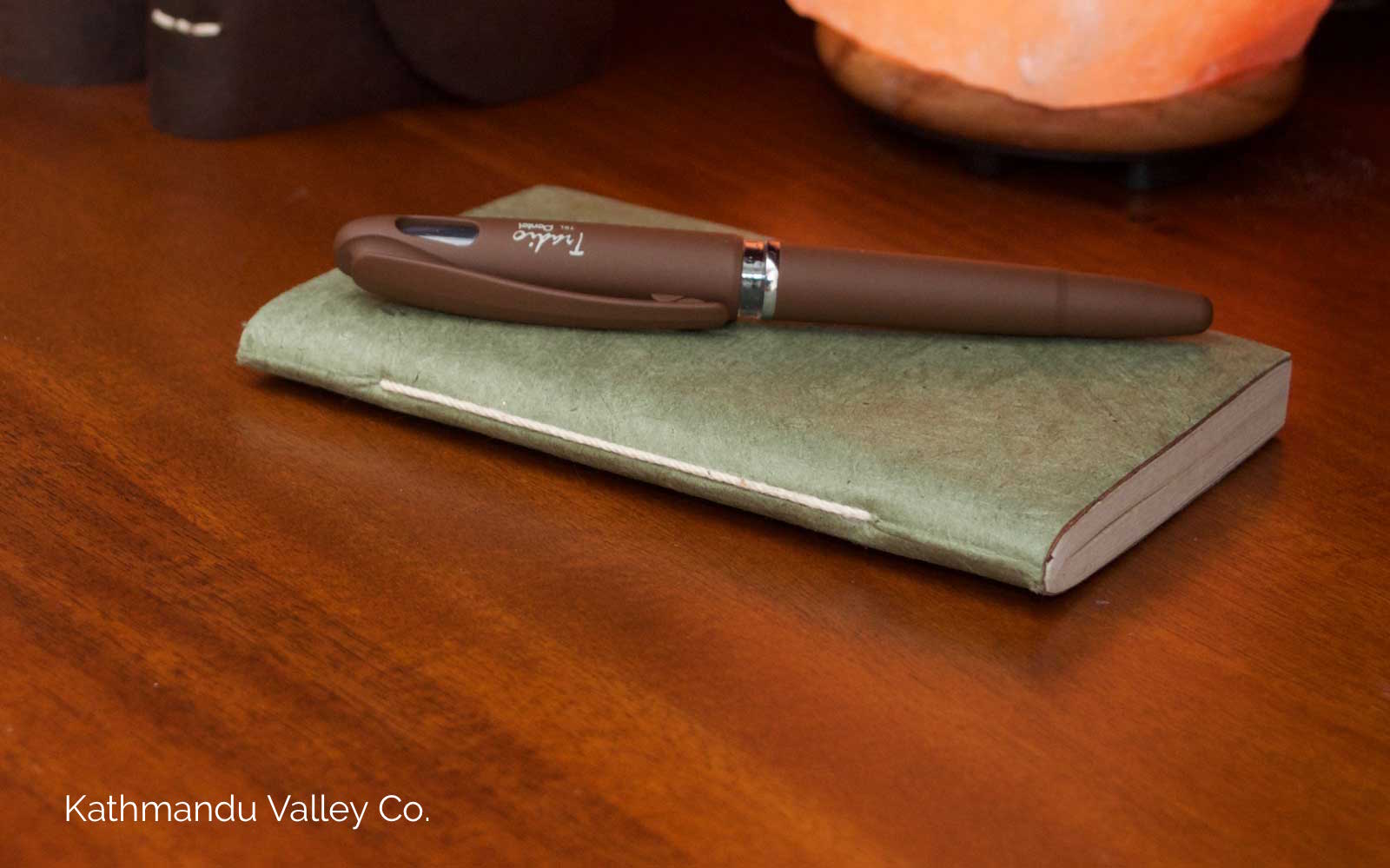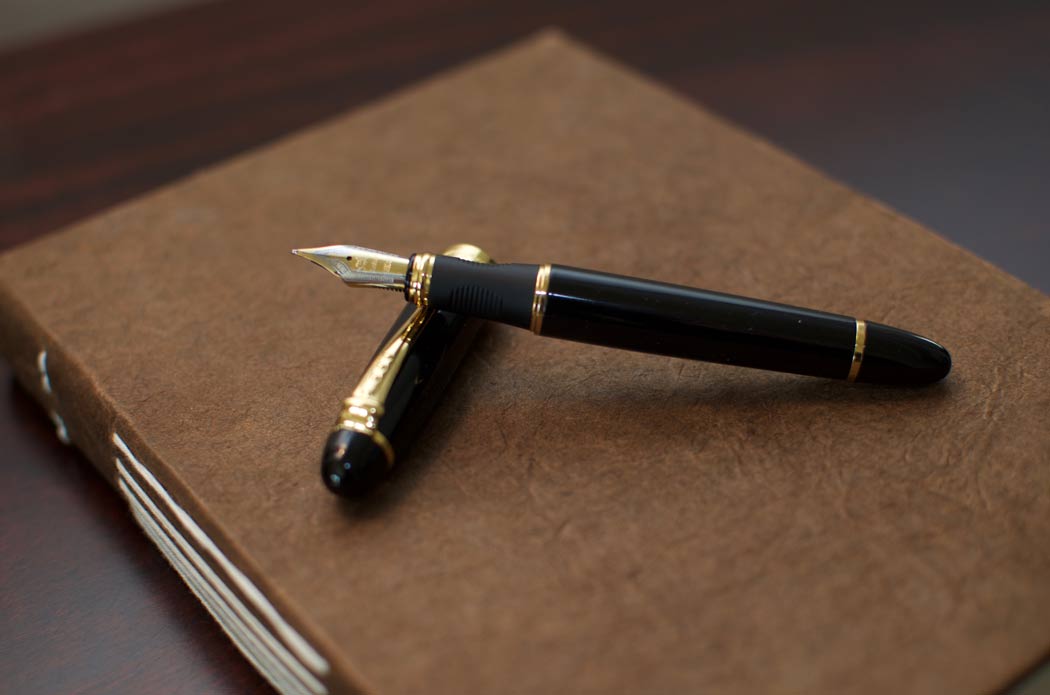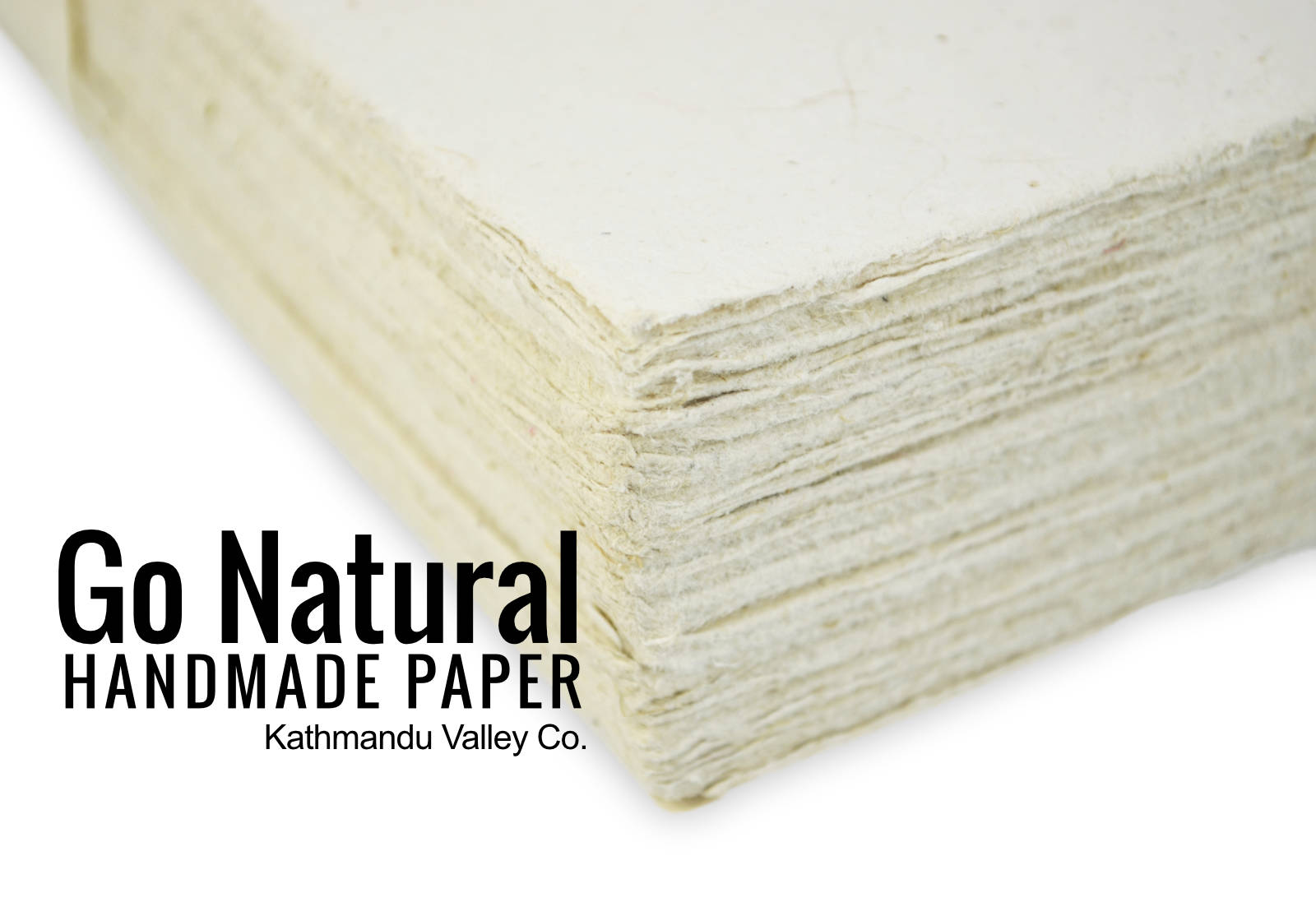Guide to Pen Types
Lokta Paper Pen Guide
What Pen Works Best on Handmade Lokta Paper?
Pen types, and brands within those types, can vary greatly one from one another. Experimentation can be a lot of fun as you explore what pen types and brands work best to your liking. Below are some general tips on pen types to get started.
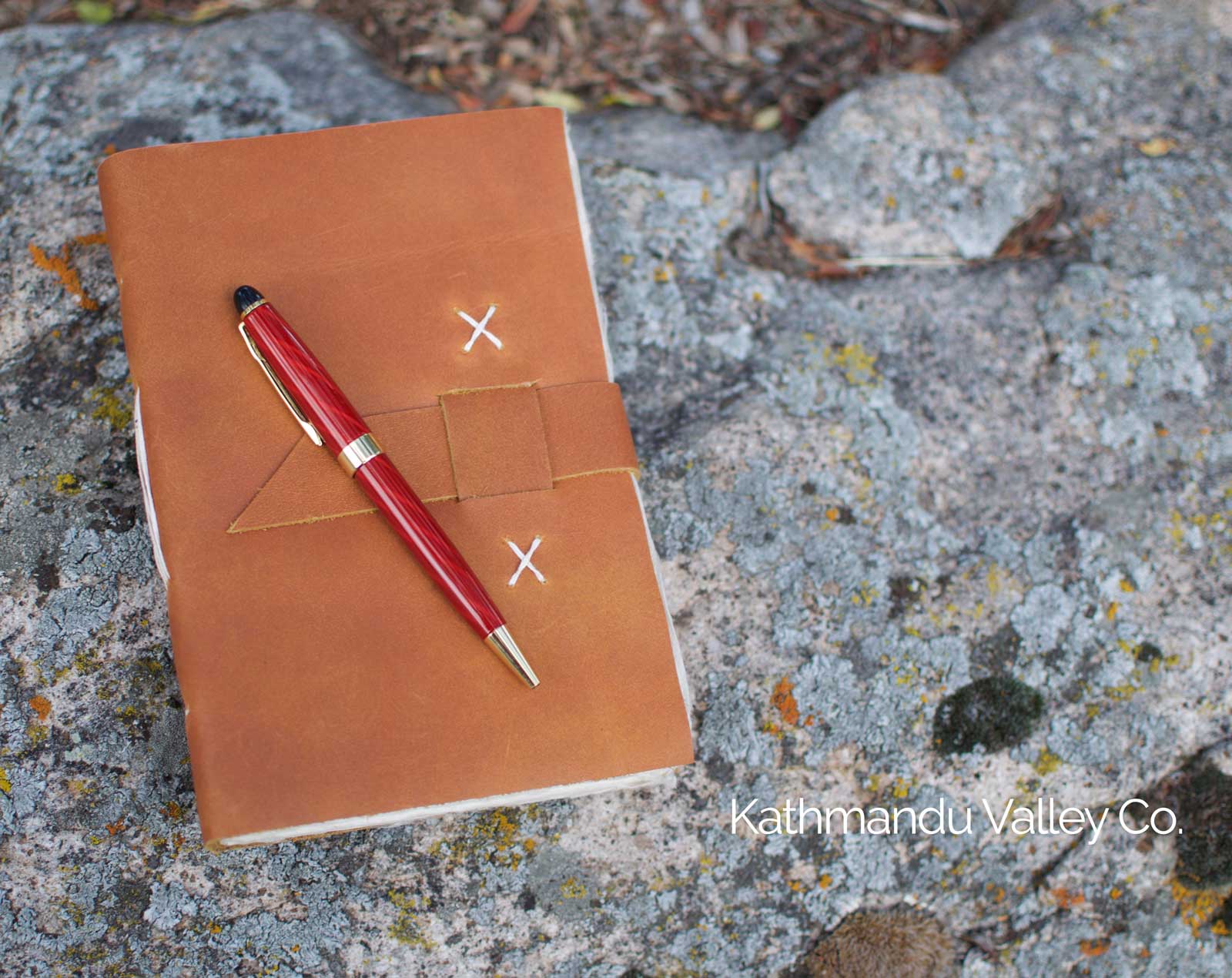
Ballpoint Pens
This is your basic pen, many are sold in packs for a few dollars, but you can also find expensive, high-quality ballpoints with elegant styles. It’s the most common type of pen used today.
Ballpoints work great on lokta paper.
Generally, the ink from a ball point won’t appear as bright as ink from the other pen types, but in terms of a workhorse pen, ballpoints get the job done.
Ballpoints produce little to no feathering (meaning that the ink doesn’t spread out on the page like a feather).
There is also little to no bleeding (ink seeping through to the back side of the paper).
The ink generally doesn’t seep deep into the page. It sits on top. If you’ve ever smudged ink from a ballpoint before it fully dried, now you know why, but it usually dries very fast. It’s oil based and is often referred to as a pasty ink.
Ballpoints offer a variety in point sizes (Fine, Medium, Broad). So, if you find a medium 1mm too broad (thick lines), you could try a fine 0.7mm for example.
Ballpoints are a very popular pen, are relatively inexpensive, and deliver consistency, day-in-day-out. It’s hard to go wrong with a ballpoint pen on lokta paper.
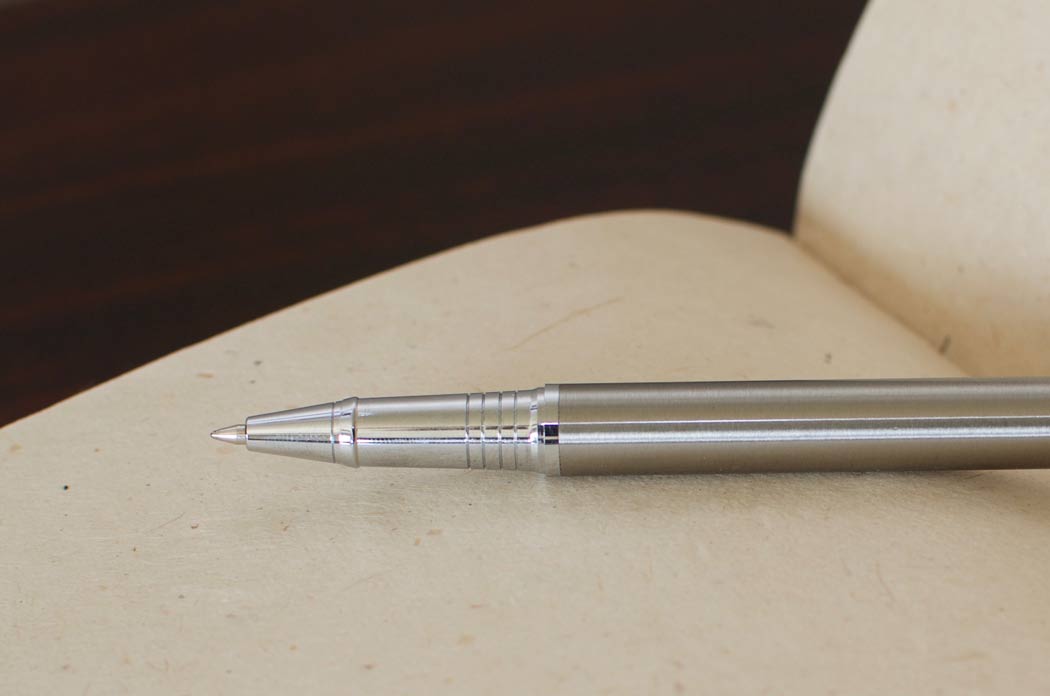
Rollerball Pens
Rollerball and Gel pens produce a much more fluid ink flow to the page. They’re more expensive (generally) than ballpoint pens.
The ink seeps deeper into the page rather than staying on top like ink from most ballpoints. This is true on all paper types because the ink is water based and absorbs better into the page.
The ink used often is much more permanent, and harder to wash out (if at all).
Here’s where feathering and bleeding can come into play. Holding the pen too long in one place on any paper can cause the ink to flow outward (feathering) and through (bleeding), but the beauty of a rollerball is the richness of the ink color on the page and the fluid way it writes.
The harder you press on the paper can produce bleed on Lokta paper similar to other papers.
Experiment with different point sizes (Fine, Medium, Broad) to see what works best for you.
Gel Pens
Gel pens are similar to rollerball (some classify them together), but the gel ink is the difference allowing for vivid colors. They’re generally waterproof with many marketed as wash-proof and safe for check writing.
The PaperMate Ink Joy gel 0.7mm is a great pen (available in various colors). Other popular ink pens are the Pilot G-2 and the uni-ball Signo.
Gel pens also range in point size. A fine or extra fine gel or rollerball pen creates vivid strokes on lokta paper with very little to almost no feathering or bleeding.
Even on other very thick paper, the fluid ink can be seen from the back of the page (often called “see through” or “ghosting”). “Bleeding” is when the ink actually comes through to the other side as if the pen had been placed there.
To minimize the ghosting use a fine or extra-fine point gel or rollerball pen as they put down much less ink than a broad point pen.
Our favorite pens to use on Lokta Paper are Gel Pens 0.7 or finer.
The ink is fluid, bright, and there is minimal ghosting (see through).
Gel pens are also relatively inexpensive and usually available in packs. Any major retail outlet that sells pens should have gel pens available and usually in a variety of colors.
The PaperMate Ink Joy, Pilot G-2 and the uni-ball Signo are great options (the PaperMate Ink Joy being one of our favorites). The Pentel Tradio (pictured with the Nepali Companion Softcover Notebook above) is also a fine choice.
Fountain Pens
Fountain pens offer a very smooth writing experience with better expression in the flow of ink and a selection of vivid colors.
Do fountain pens work on lokta paper?
Yes, they do. Fountain pens are unique, however, in that they can be filled with different inks, and some inks and nib combinations work better than others on Lokta paper.
The tip of a fountain (the nib) lets ink flow to the page. A broad nib lets much more ink flow than a medium or fine nib. The more ink flow, the greater chance for feather or bleed through on lokta paper.
The type/brand of ink will affect the outcome as well.
The fibrous nature of lokta paper can open it up to feathering. Inks like Noodler’s X-Feather ink are designed to prevent feathering.
A fine nib (such as with this Lamy Safari) works well on lokta paper.
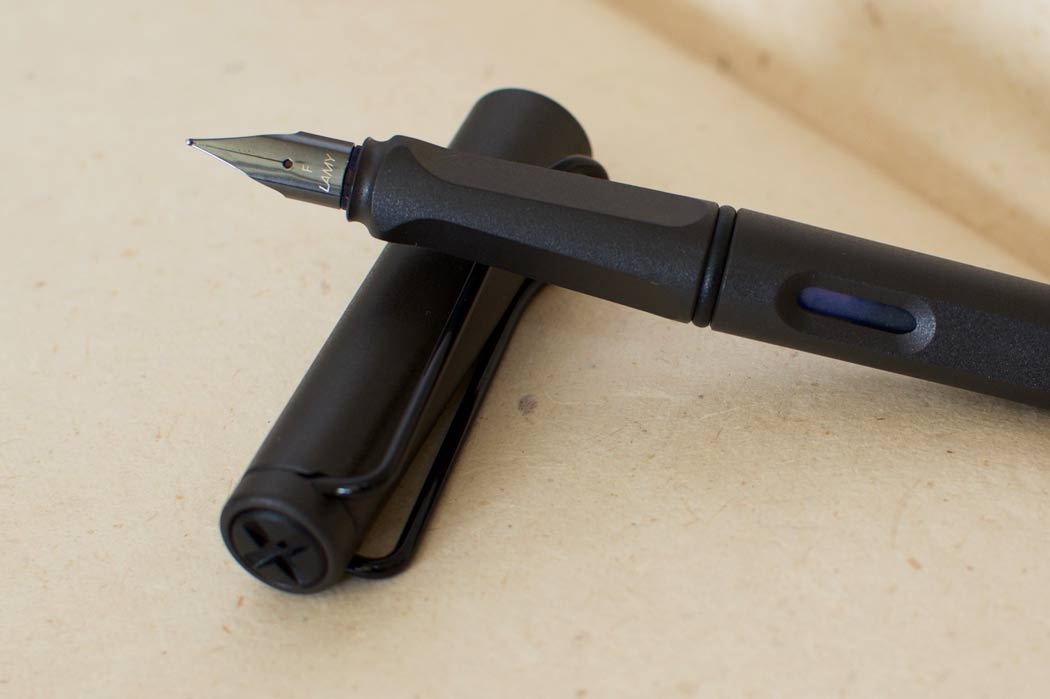
Medium nibs on fountain pens use a lot of ink. They work on lokta paper but with the increased ink, there’s going to be “ghosting” on the back of the page and a greater chance for feathering.
Starter Fountain Pens
The Lamy Safari and Pilot Metropolitan are great starter pens.
Permanence and Waterproofing
Generally, the stock ink that comes with a fountain is not waterproof.
Inks like Noodler’s Heart of Darkness are permanent (and we mean permanent).
In our water tests, the ink wasn’t even phased, it didn’t bleed, feather or smudge when run over with gobs and gobs of water. We even tried rubbing it out while the water was running, and it still kept its brilliance.
Fountain pens can be a great way to express yourself on lokta paper.
The texture on the Lokta paper can take some getting used to if you’re coming from non-textured paper, but it can be rewarding and fun (yep, we like paper and pens).
Dip Pens on Lokta Paper
Dip pens are the predecessor to all these pens (ultimately coming from quill and reed pens). Dip pens are named so because you, well, dip the metal nib of the pen into a inkwell every few words or lines.
The dip pen that works best on the fibrous lokta paper doesn’t have a metal nib. It’s made of glass.
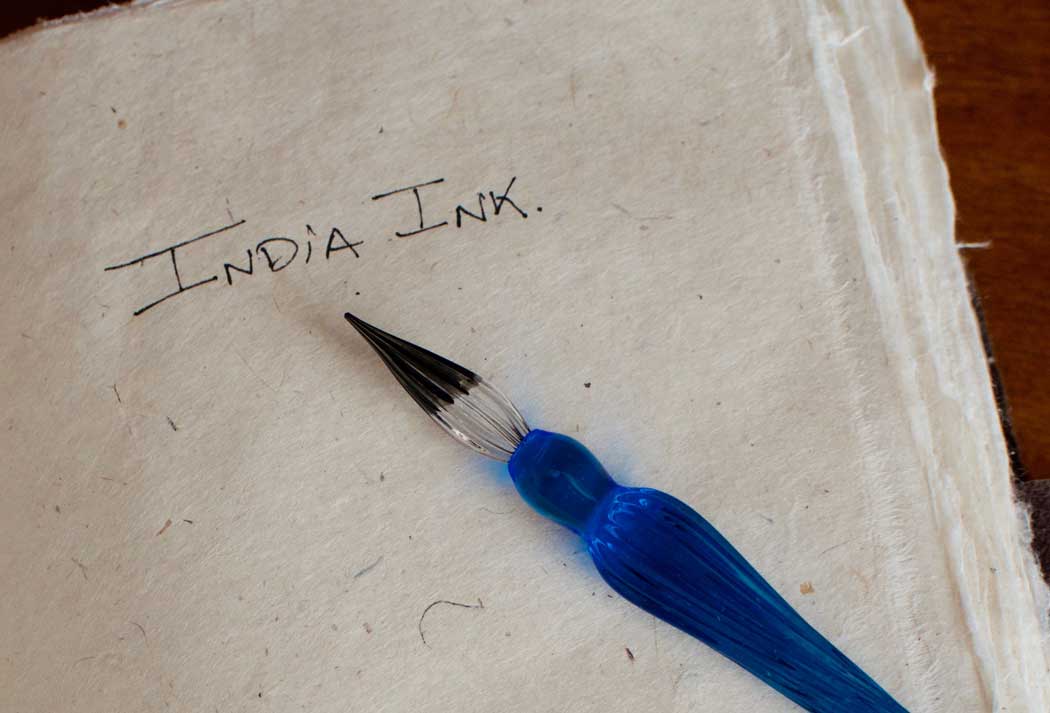
Dip pens with metal nibs provide a little bit of a challenge on Lokta paper, and require bit of adjustment in technique and pressure since lokta paper is soft and even fabric-like. Metal nibs with a wide space between the tines (like for calligraphy) aren’t recommended.
A glass dip pen allows good use of India inks, and provides an experience unlike any other pen. More about glass dip pens and lokta paper here.
For Starters
If you’re just starting out, Gel or Rollerball pens with a fine point work well on Lokta paper with little feathering or bleed which is quite remarkable for a handmade paper.
For fountain pen enthusiasts, a fine to extra-fine nib with an ink like Noodler’s Heart of Darkness or X-Feather do really well and maintain permanence even when soaked with water.
Whatever your pen preference, we hope you’ll record those special moments, sketch those special sketches, and capture the adventure with your Lokta Paper journal.
Bottom Line on the Best Pen for Lokta Paper
The bottom line is that it will come down to personal preference, but one of the most popular options that provide the brightest lines on the page go to Ink Gel pens.
Does ink feather on the paper?
Feathering refers to the ink spreading out into the paper (as opposed to through it).
Because of the fibrous nature of the paper, there can be some minimal feathering depending on the type of ink used.
Does ink bleed through the paper?
Different ink, pen types, and pressure, and stroke speed used can produce different results on any paper.
If you have a pen that lays down the ink thick as in a medium or thick fountain pen nib, or 0.7 or higher gel pen, you may see ghosting or even some bleed through.
If you’re concerned about bleed through or ghosting, we suggest you look at our Nepali Eco Clean-cut Epic journals which have paper twice as thick as our standard paper.
For Art and Special Projects
Our standard-weight lokta printer paper is great for regular printing projects, but for scrapbooking, hand-written or printed invitations, or other special projects, we recommend our extra-thick Lokta Card Stock Paper. The 8.5×11 inch sheets are available with deckle-edge (pictured below) or clean-cut edge.

